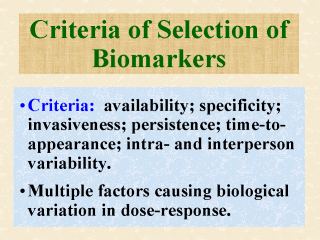| front |1 |2 |3 |4 |5 |6 |7 |8 |9 |10 |11 |12 |13 |14 |15 |16 |17 |18 |19 |20 |21 |22 |23 |review |
 |
Criteria or
considerations for the selection of biomarkers in epidemiologic studies have been
summarized by Vine (1994). These include: (a) Availability of markers; (b) specificity of
the marker; (c) invasiveness of the sampling method; (d) time-to-appearance of the marker;
(e) persistence and stability of the marker; (f) intra- and interperson variability; and
(g) cost and reliability of the assay. Scientific and technical concerns with the use of biomarkers that are more basic to all types of epidemiologic studies appear to center around the assayís sensitivity, specificity, and predictive value. These are standard issues concerning diagnostic tests. Another related problem is the baseline value used, which is the level of the marker dose occurring naturally as a result of other than the exposure(s) in question. These concerns often make it difficult for epidemiologists to use the biomarker data effectively in assessing human exposures. Ashford et al. (1990) provide a good discussion on the scientific and technical concerns related to medical surveillance, genetic monitoring, and biological monitoring. As pointed out by these authors, medical and genetic tests too are subject to similar concerns regarding the issues of sensitivity, specificity, and predictability. They also outline the multiple factors that can cause biological variations in response among subjects exposed to the same substance, such as the individualís diet, rate of metabolism, age, sex, and health condition. |